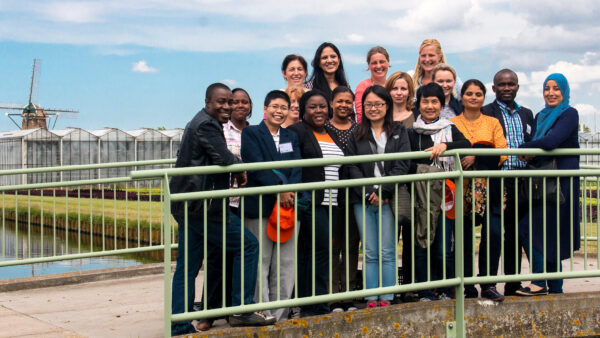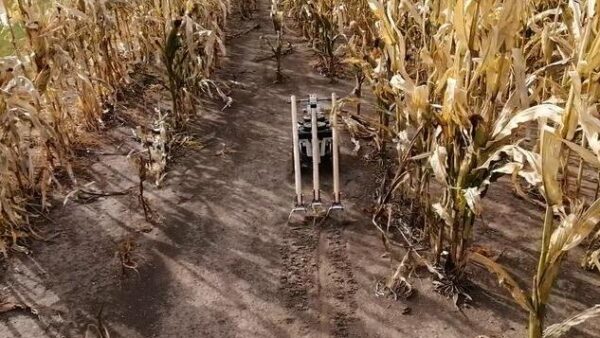With a low-level presence policy in grain gaining traction, is it time to move ahead with seed LLP policy development?
Since 2010, Canada has spearheaded efforts to provide clarity and transparency around the issue of low-level presence (LLP) of genetically modified crop material in imported grain, food and feed
The 2016 publication by Agriculture and Agri-Food Canada (AAFC) of a policy model for the management of this low-level presence is a milestone in the movement toward a risk-management approach to resolving LLP situations, while placing Canada at the forefront of LLP policy development.
“Publishing Canada’s LLP in grain policy model is a world-leading step,” says Ian Affleck, CropLife Canada’s executive director of plant biotechnology. “We took a stance. We said, ‘This is what we will put forward — who wants to come with us.’ I don’t think any other country had put something like that together in such a way. It was a real benefit to Canada to take that leadership step.”
Currently, Affleck says, Canada is consulting global partners ready to move forward with domestic and international discussions on LLP management, adoption of similar policy, as well as policy implementation.
Now, with LLP in grain policy on firmer footing, has the time come for industry stakeholders to move ahead on LLP in seed policy development? Not quite yet, says Dave Carey, executive director of the Canadian Seed Trade Association (CSTA).
“The grain LLP policy has to play out first,” says Carey. “Especially when you start getting into what the allowable levels are, because if you created [a policy] for seed that wasn’t applicable to grain, or if you set the threshold too low or too high, that would really impact the grain trade.”
Additionally, although Canada may figure prominently, discussions on policy development for LLP in seed will play out at an international level, and will be housed with the International Seed Federation (ISF) and the Seed Association of the Americas (SAA), says Carey.

CSTA Executive Director
“It’s the CSTA’s perspective that we have a leadership role to play, but really the ones driving the conversation are ISF and SAA. That’s intentional, so that the CSTA, AAFC, and Canadian Food Inspection Agency aren’t all having these conversations in a bubble.” Meanwhile, the American Seed Trade Association and European Seed Association are also having their own conversations. “ISF needs to bring it up to that higher level,” says Carey.
And ISF has some clout. The international organization can bring many seed associations and industry stakeholders to the table from around the world to discuss LLP in seed policy. For example, 70 countries were represented at ISF’s midterm meetings in Montreal, Que., held last October, at which LLP in seed was on the agenda.
In September, the sixth Seed Congress of the Americas held in Cartagena, Colombia, also tabled some time to discuss the issue.
Tasked with reporting back to the Canadian government and AAFC’s Seed Sector Value Chain Roundtable about the bigger international conversations taking place at these meetings and elsewhere about LLP in seed, is AAFC’s Low Level Presence in Seed Working Group.
Adopted by the value chain roundtable in 2013, the working group shares information and ensures the industry is well informed and up-to-date on international initiatives relating to LLP in seed, including the efforts of ISF and other countries.
“At this point, it’s not so much about policy development as keeping everyone in the loop and making sure they know the Canadian perspective,” says Carey, who now chairs the working group. “Whatever policy is developed internationally must reflect the needs of CSTA’s members so they can do business,” he says.
The working group will also review the policymaking process undertaken for LLP policy in grain. “You can’t underestimate the complexity of [LLP]. In some countries, LLP or GM is still a hot topic,” says Carey about lessons learned from domestic grain LLP policy development.
“Make sure your consultations are holistic and you haven’t forgotten any value chain partners, and it’s a policy that’s reproducible. One reason it takes so long is you have to make sure you’re bringing everyone along and you’re getting buy-in as you go.”
Affleck also considers consultation an important part of the process, adding a straightforward, open path toward policy development is helpful.
“Canada’s approach to be transparent and consultative in their development of a [grain] LLP policy was the right approach. It allowed industry to discuss the challenges they’re encountering and for government to discuss their issues, and for us to come together with a model policy that was well received by all parties involved,” says Affleck.

However, expect the LLP in seed policy development process to be driven by industry rather than government, says Carey.
“The way I think LLP in seed will develop is it will be industry-led and government-enabled, where the ISF is leading it — and the SAA is leading it,” he says.
A number of working group members are government representatives, which is invaluable, says Carey. CFIA, AAFC, the Grains Commission and Global Affairs Canada all have a seat at the table.
“We have our regulators and our Canadian bureaucrats there as a sounding board to ensure that what [industry stakeholders] are talking about seems relevant, appropriate and reproducible in Canada, and in line with the government’s thinking on LLP,” says Carey.
Some of these working group members have previous experience creating LLP policy. “It’s a big advantage that we can provide feedback about what’s happening on the seed side to regulators and bureaucrats involved on the grain side. They can draw parallels as to what worked well or didn’t work well,” says Carey.
And keeping everyone on the same page is essential. “We’re really making sure we’re in lockstep with our partners — that we’re on the same path and not on divergent routes,” says Carey.
This fall, as the working group chair and CSTA’s executive director, Carey will be gathering information and monitoring the international discussions taking place about LLP in seed from the various meetings he’s attending. Already, he says, the CSTA has carried out an environmental scan on LLP in seed for the working group to review and finalize for release and public consumption.
Before 2017 comes to an end, Carey would like to reconvene the working group for LLP discussions, as well as to report back to the value chain roundtable when that group assembles next spring.
“Once these international meetings are wrapped up, we’ll have a debrief on what’s happening internationally to get a sense from our industry and government colleagues what actions Canada needs to take,” says Carey. “We’ll re-engage the working group this December for a conference call to set the stage for 2018, and move the needle a little more on the LLP in seed file,” he says.
Although it may seem a slow-going process, that’s the correct speed for this type of policymaking.
“It’s not something you want to rush. You wait to make sure it’s done deliberately and correctly so that you’re going in with a solid position. We did that with grain, and I think the same can be said for seed,” says Affleck.












